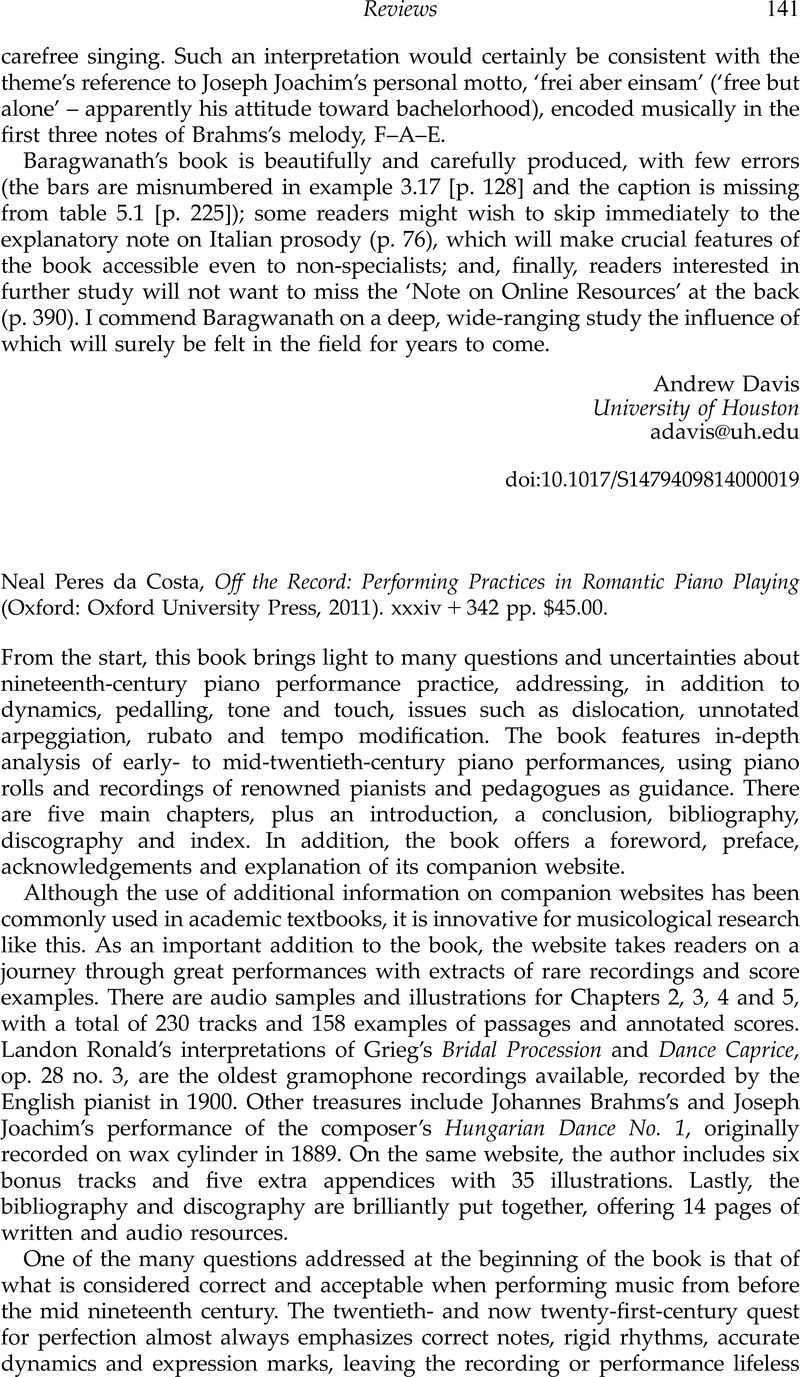No CrossRef data available.
Published online by Cambridge University Press: 05 August 2014

1 Dislocation is discussed in Philip's, RobertPerforming Music in the Age of Recording (New Haven: Yale University Press, 2004)Google Scholar. In a review of that book, Charles Rosen includes it in his list of endangered expressive devices: ‘various expressive devices once common in the early twentieth century have been almost outlawed: portamento (sliding from one note to another on a stringed instrument); playing the piano with the hands not quite together (Philip calls this dislocation); arpeggiating chords (not playing all the notes of the chord at the same time but one after another), and flexibility of tempo’. See Rosen, Charles, ‘Playing Music: The Lost Freedom’, The New York Review of Books 52/17 (3 November, 2005)Google Scholar: 2.
2 Moscheles’, IgnazStudies for the Pianoforte, op. 70 (London: Cramer & Beale, 1827)Google Scholar.
3 Czerny, Carl, Vollständige theoretische-practische Pianoforte-Schule, op. 500, 3 vols (Vienna: Diabelli, 1839)Google Scholar, trans. as Theoretical and Practical Pianoforte School, op. 500 (London: Cocks, 1839).
4 Cramer, Johann, Instructions for the Pianoforte (London: Chappell, 1812)Google Scholar.
5 See Christiani, Adolph F., The Principles of Expression in Pianoforte Playing (New York: Harper and Brothers, 1885)Google Scholar: 299.
6 Anon, ., ‘On Musical Colouring’, Harmonicon, 1/11 (1823)Google Scholar: 162.